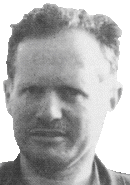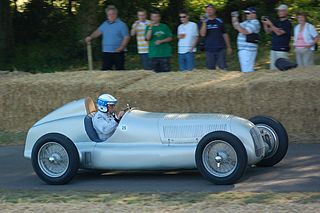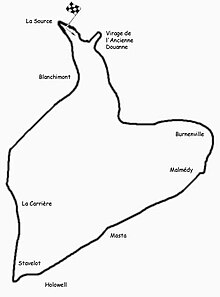Grand Prix motor racing, a form of motorsport competition, has its roots in organised automobile racing that began in France as early as 1894. It quickly evolved from simple road races from one town to the next, to endurance tests for car and driver. Innovation and the drive of competition soon saw speeds exceeding 100 miles per hour (160 km/h), but because early races took place on open roads, accidents occurred frequently, resulting in deaths both of drivers and of spectators. A common abbreviation used for Grand Prix racing is "GP" or "GP racing".

The Belgian Grand Prix is a motor racing event which forms part of the Formula One World Championship. The first national race of Belgium was held in 1925 at the Spa region's race course, an area of the country that had been associated with motor sport since the very early years of racing. To accommodate Grand Prix motor racing, the Circuit de Spa-Francorchamps race course was built in 1921 but until 1924 it was used only for motorcycle racing. After the 1923 success of the new 24 hours of Le Mans in France, the Spa 24 Hours, a similar 24-hour endurance race, was run at the Spa track.

The 1998 Belgian Grand Prix was a Formula One motor race held on 30 August 1998 at Circuit de Spa-Francorchamps; it was the thirteenth race of the 1998 FIA Formula One World Championship. The race was won by Damon Hill driving for the Jordan team, with Hill's teammate Ralf Schumacher finishing in second place and Jean Alesi finishing in third for the Sauber team, taking his 32nd and last podium of his Formula One career.

Baron Emmanuel Leo Ludwig 'Toulo' de Graffenried was a Swiss motor racing driver. He participated in 23 World Championship Grands Prix, debuting on 13 May 1950, and scored a total of nine championship points. He also participated in numerous non-Championship Formula One races.
The 1937 Grand Prix season was the fifth AIACR European Championship season. The championship was won by Rudolf Caracciola, driving for the Mercedes-Benz team. Caracciola won three of the five events that counted towards the championship.
Grands Prix between 1940 and 1945 occurred during World War II and so were limited to a very small number of events. There was no organised championship in these years. The majority of Grand Prix races during this period were run in America. The first post-war races were run in Paris on 9 September 1945, one week after the end of the war.
The 1946 Grand Prix season was the first post-war year for Grand Prix motor racing. It was notable for including the first ever race run to Formula One criteria, the 1946 Turin Grand Prix. There was no organised championship in 1946, although Raymond Sommer proved to be the most successful driver, winning five Grands Prix. Maserati's cars proved difficult to beat, winning 9 of the season's 20 Grand Prix races.
The 1947 Grand Prix season was the second post-war year for Grand Prix racing. It constituted the first full season of the FIA's Formula One motor racing, though some Grands Prix still used other formulas. There was no organised championship in 1947, although several of the more prestigious races were recognised as Grandes Épreuves by the FIA. Luigi Villoresi proved to be the most successful driver, winning six Grands Prix. Alfa Romeo's cars proved difficult to beat, winning 13 of the season's 32 Grands Prix.
The 1925 Grand Prix season was the first year for the new AIACR World Manufacturers' Championship season. The championship was won by Alfa Romeo, with its P2 model.

The 1926 Grand Prix season was the second AIACR World Manufacturers' Championship season and the first running to new 1.5-litre regulations. The championship was won by Bugatti and its Type 35 was the dominant car of the year.
The 1912 Grand Prix season saw Grand Prix motor racing in Europe and the United States. The growing economic confidence and interest from car manufacturers saw bigger fields and more races in the season. The French Grand Prix was held for the first time since 1908 and staged at Dieppe. The American Grand Prize was held in Milwaukee, moving from its previous home in Savannah.

The Belgian motorcycle Grand Prix was a motorcycling event that was part of the Grand Prix motorcycle racing season from 1949 to 1990.
This is a list of motorsport races held before 1906, which is regarded as the first Grand Prix racing season.

The Mercedes-Benz W25 was a Grand Prix racing car designed by Daimler-Benz AG for the 1934 Grand Prix season, in which new rules were introduced, and no championship was held. In 1935, the European Championship was resumed, and it was won by Rudolf Caracciola in a W25. In modified form, the W25 remained in use until 1937, when it was succeeded by the Mercedes-Benz W125.

The 1976 Belgian motorcycle Grand Prix was the seventh round of the 1976 Grand Prix motorcycle racing season. It took place on 4 July 1976 at the Circuit de Spa-Francorchamps.

Motorsport is a popular form of sport in India for over 100 years.The Federation of Motor Sports Clubs in India (fmsci) is the National governing body for motorsports approved by FIA and FIM. FMSCI, usually written in small caps, is the National Federation that organises nearly a dozen Nationals in various disciplines of motorsport. Some of the popular Indian motorsports Nationals are: Indian National Rally Championship (INRC), Indian National Supercross Championship, Indian National Car Racing Championship, Indian National Motorcycle Racing Championship and Indian National Rotax Max Karting Championship.

The 1978 Belgian motorcycle Grand Prix was the seventh round of the 1978 Grand Prix motorcycle racing season. It took place on 2 July 1978 at the Circuit de Spa-Francorchamps. These races, along with the Spa 24 Hours touring car race 3 weeks later were the last international major events held on the old 14 kilometer Spa-Francorchamps circuit.

August "Bubi" Momberger was a German racing driver and engineer, who competed in Grand Prix motor racing events for various manufacturers between 1926 and 1934. During the 1934 Grand Prix season – the first season of the infamous Silver Arrows period of German dominance of Grand Prix racing, that would last until the outbreak of WWII – he drove for the Auto Union Rennabteilung, and was the first driver of a Silver Arrows car to take a podium finish in a major race. During the season he took a further second-placed finish, and posted two fastest laps, but worsening arthritis and a deteriorating relationship with the Auto Union team manager forced him into retirement before the end of the year. Following his retirement from racing, Momberger returned to his engineering training and rose steadily through the ranks of the German automobile industry, eventually becoming technical director of the Borgward company's Goliath division in Bremen.

The 2021 Belgian Grand Prix was a Formula One motor race held on 29 August 2021 at the Circuit de Spa-Francorchamps. It was the 12th round of the 2021 Formula One World Championship. The race was also the 77th overall running of the Belgian Grand Prix, the 66th time the event was run as part of the Formula One World Championship, and the 54th World Championship Belgian Grand Prix held at the Spa circuit. The race was won by Max Verstappen, ahead of George Russell and Lewis Hamilton.
This article gives a general overview of motorsport in Italy. For a more exhaustive view see; Motorsport in Italy by decade and Motorsport in Italy by year. Motorsport is widely popular in Italy, and its history spans over a century back to the early 1900s. Today, Italy is considered a hub of motorsport in terms of racing venues, drivers, teams, and manufacturers. It hosts annual races across Formula One, MotoGP, the World Touring Car Cup, and other prominent motor racing series.












